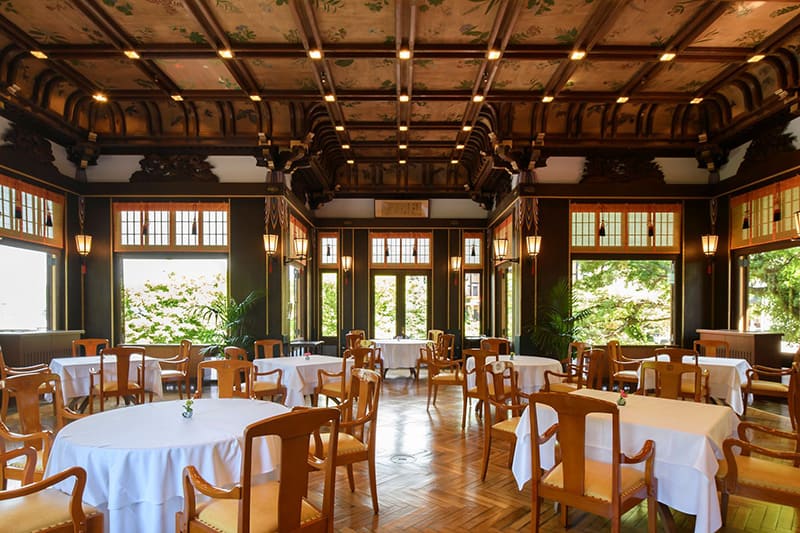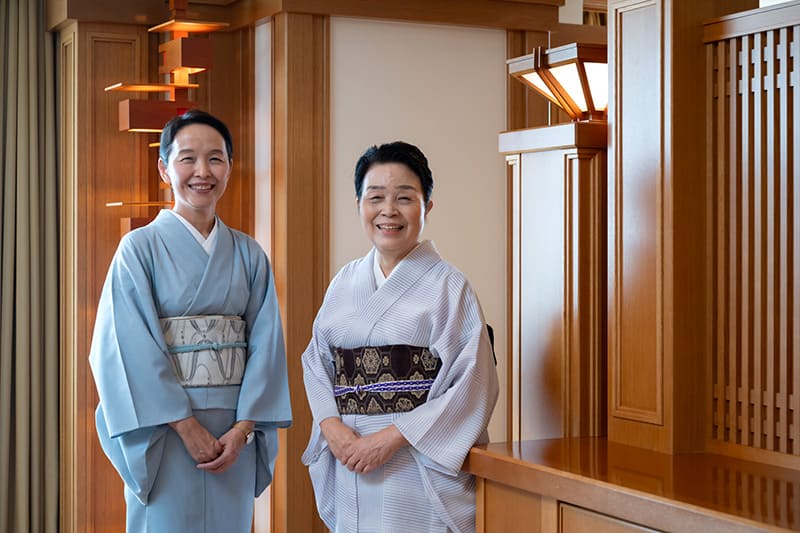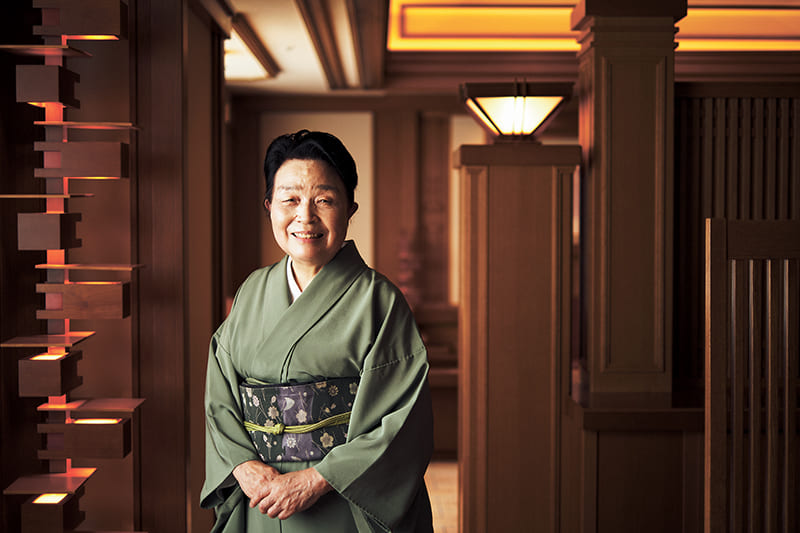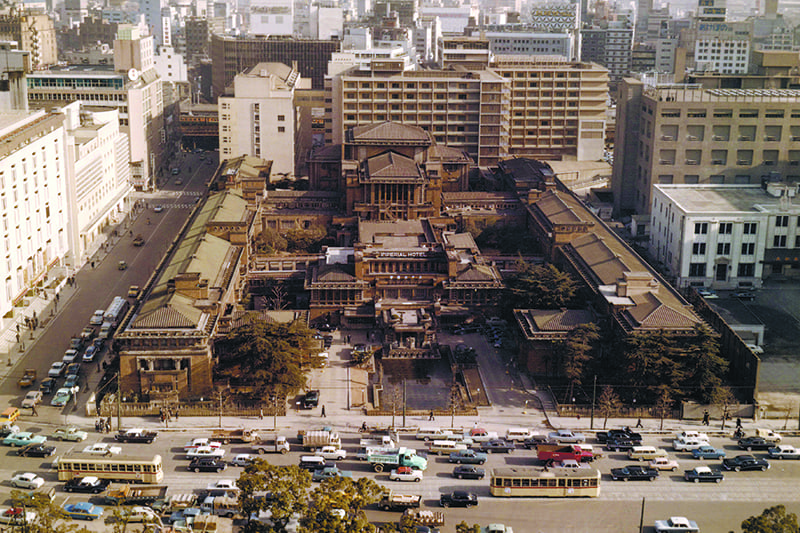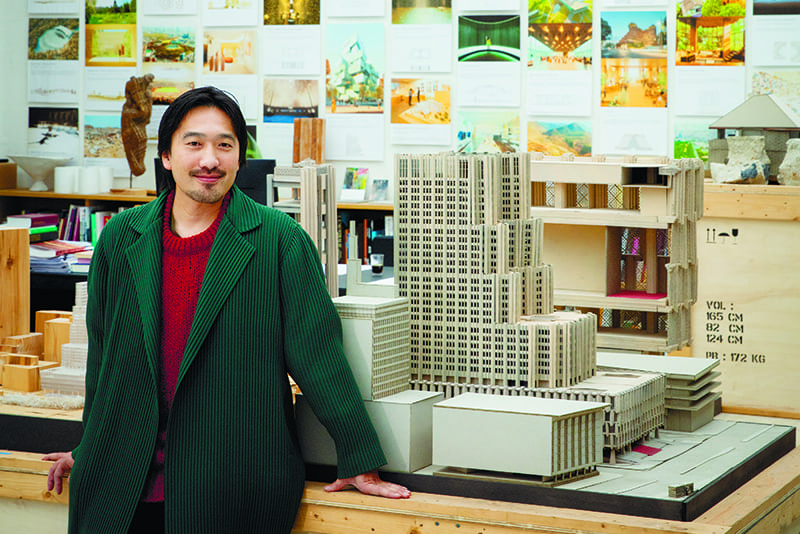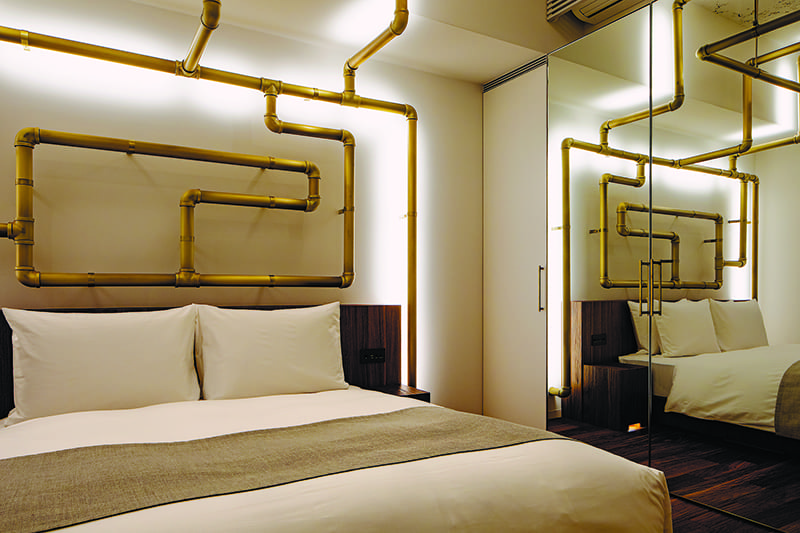September 27, 2024
Design of Six Senses Kyoto engages all senses
PICK-UP ARTICLE
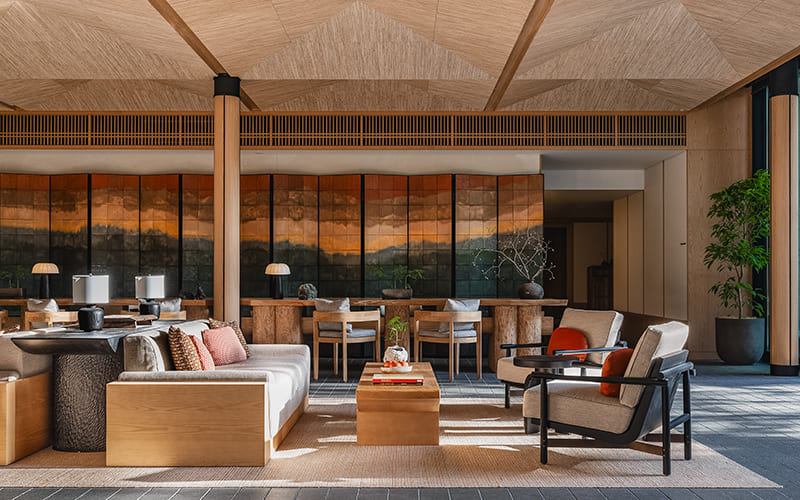
PHOTO: BEN RICHARDS
Six Senses, which operates hotels globally on the themes of “sustainability” and “wellness” and is a pioneer in the movement for natural luxury resorts, opened its first hotel in Japan in April.
Located in Kyoto’s Higashiyama district next to the Kyoto National Museum and Toyokuni Shrine, which enshrines Toyotomi Hideyoshi, the feudal lord who unified the nation during the Warring States Period (1482-1573), the hotel lies in the heart of the ancient capital, which despite its dignified and tranquil atmosphere is a hub of tourism.
Stepping inside the hotel from a modest carport that blends in with the ancient city, visitors find themselves in a lobby facing onto a courtyard. On the wall where the front desk is located is a mural depicting the ethereal Mount Kurama comprising 504 tiles made in the traditional Kyoto style of Raku ware. On the opposite wall is a unique artwork that is a modern interpretation of the national treasure “Choju Giga,” a picture scroll often referred to as Japan’s oldest manga. The hotel’s design is said to have been inspired by the Heian Period (794-1185), when Japan’s unique artistic culture first flourished.
Six Senses pursues a kind of comfort that is felt through all five senses. The hotel’s efforts to transform and sublimate “luxury” from something material to something spiritual can be felt everywhere, from visible interior features to invisible fragrances and services. Innovations in interior design include the use of natural materials such as wood and stone and the incorporation of artisanal craftsmanship. The hotel was designed by the Singapore-based Blink Design Group, which has worked on luxury resorts all over the world. We interviewed Clint Nagata, the founder and creative director of the design team, about the hotel’s design.

© SIX SENSES KYOTO
“This is our second project with Six Senses, after Uluwatu in Bali,” he said. “The difference here is that the Kyoto project is an urban resort, the second for Six Senses, after Rome. The site is long and narrow from east to west, with the entrance on the east side facing a busy street. Even under these conditions, it was important in the design process how the hotel concept of ‘wellness’ and a biophilic environment (connecting one to nature) could be perceived by the hotel’s guests. In particular, the entrance, the first point of contact for guests, expresses a simple, beautiful design with a sense of materiality and playfulness. The folding book-inspired ceiling, gently curving furniture and the courtyard glimpsed through the windows enrich the visitor’s journey at its beginning and end.”
After passing through the entrance, which Nagata said is his favorite, we headed toward the guest rooms. The corridor is long and narrow, raising guests’ anticipation of their stay. Once in their room, the lush green of the courtyard and, in some rooms, the greenery of Toyokuni Shrine spreading out beyond the window let guests experience nature even from inside. Nagata said the hotel has been planned so guests can see greenery throughout the facility, from almost every location. In this way, Six Senses Kyoto achieves its goal of being an urban oasis where the guest’s sixth sense is stimulated through the enjoyment of nature.
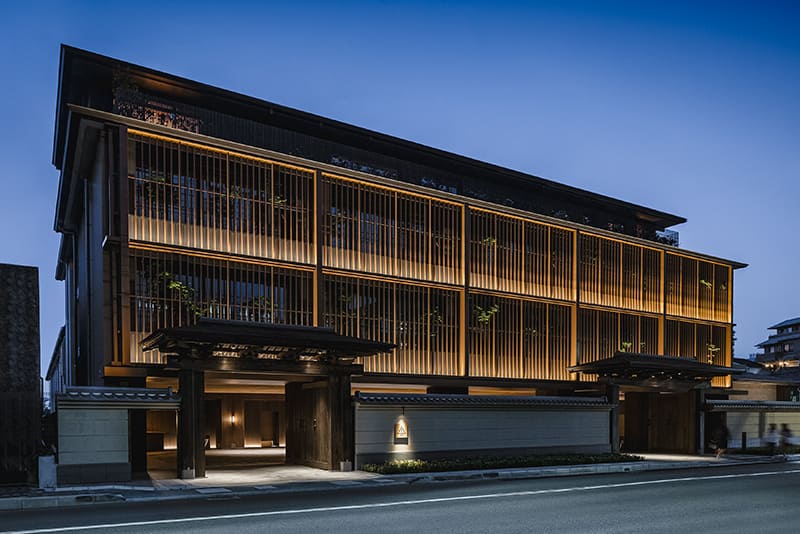
SIX SENSES KYOTO
Regarded as a pioneer in the natural luxury resort movement, Six Senses began in 1995 with its first resort in the Maldives.
The company, which became part of IHG in 2019, currently operates 26 hotels worldwide and has 42 new projects in the pipeline. Six Senses chose the Higashiyama district of Kyoto as the site of its first Japanese property, with the 81-room urban hotel opening last April. The hotel has 12 types of guest rooms, including eight suites, and the spa, restaurant and bar are open to nonstaying guests. 431 Myohoin Maegamachi, Higashiyama-ku, Kyoto, Japan Tel: 075-531-0700
https://www.sixsenses.com/jp/kyoto/
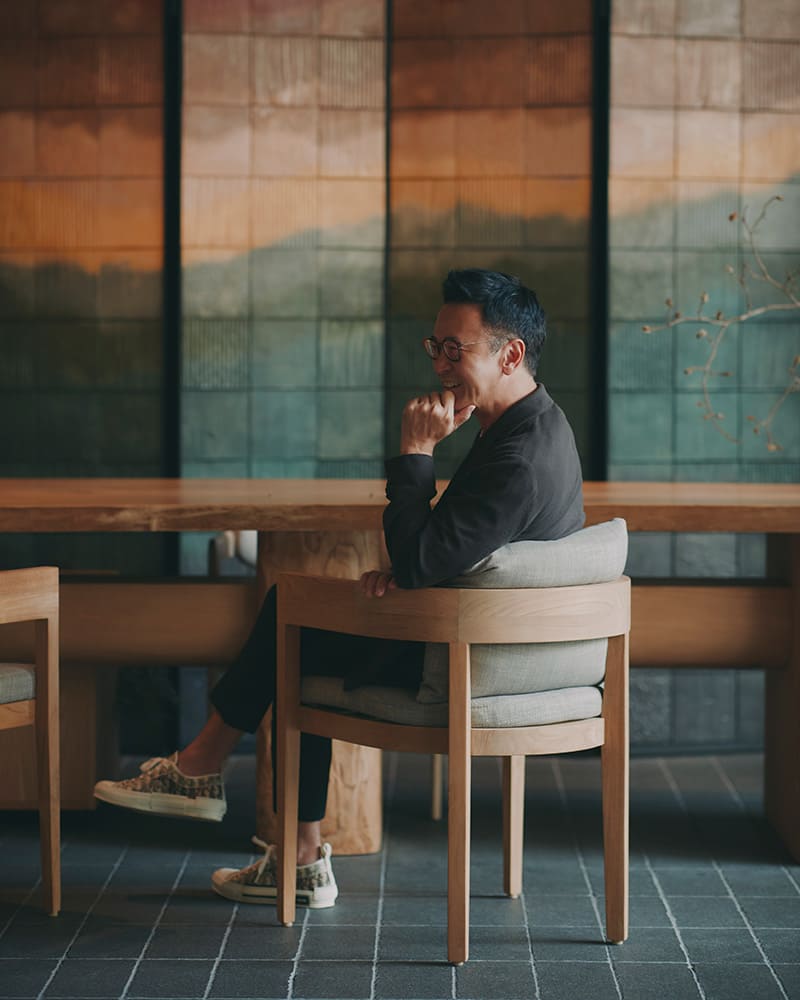
BLINK DESIGN GROUP
Blink Design Group is a design studio established in Bangkok in 2006 by Clint Nagata. Currently based in Singapore, it also has offices in Bangkok, Shanghai, Dubai and Tokyo, and has created luxury hotels and resorts in many countries and regions. www.blinkdg.com
第六感に訴える秀逸なデザイン。
自然派ラグジュアリーリゾートの先駆者として知られ「サステナビリティ」と「ウェルネス」をテーマにするホテル〈シックスセンシズ〉が、今年2024年4月、日本に初上陸となるホテルを京都・東山に開業した。〈シックスセンシズ〉が追及するのは、五感で感じる心地よさ。その工夫はインテリア・デザインで言えば、木や石など天然素材を内部空間に多く使用することや、職人の技を取り入れるといったことだろう。
ホテル内部に一歩踏み入れると、中庭に面したロービーが現れる。壁面には焼物「楽焼」の陶板504枚を使い京都・鞍馬山を表した壁画や国宝絵巻「鳥獣人物戯画」を現代的に解釈した作品が飾られている。ホテルのデザインは日本独自の芸術文化が花開いた平安時代からインスピレーションを得て展開されている。
このホテルの空間デザインを手掛けたのはシンガポールを拠点に活動する〈ブリンク・デザイン・グループ〉だ。ファウンダーでクリエイティブ・ディレクターのクリント・ナガタにホテルのデザインについて聞いた。
Return to Sustainable Japan Magazine Vol. 40 article list page

